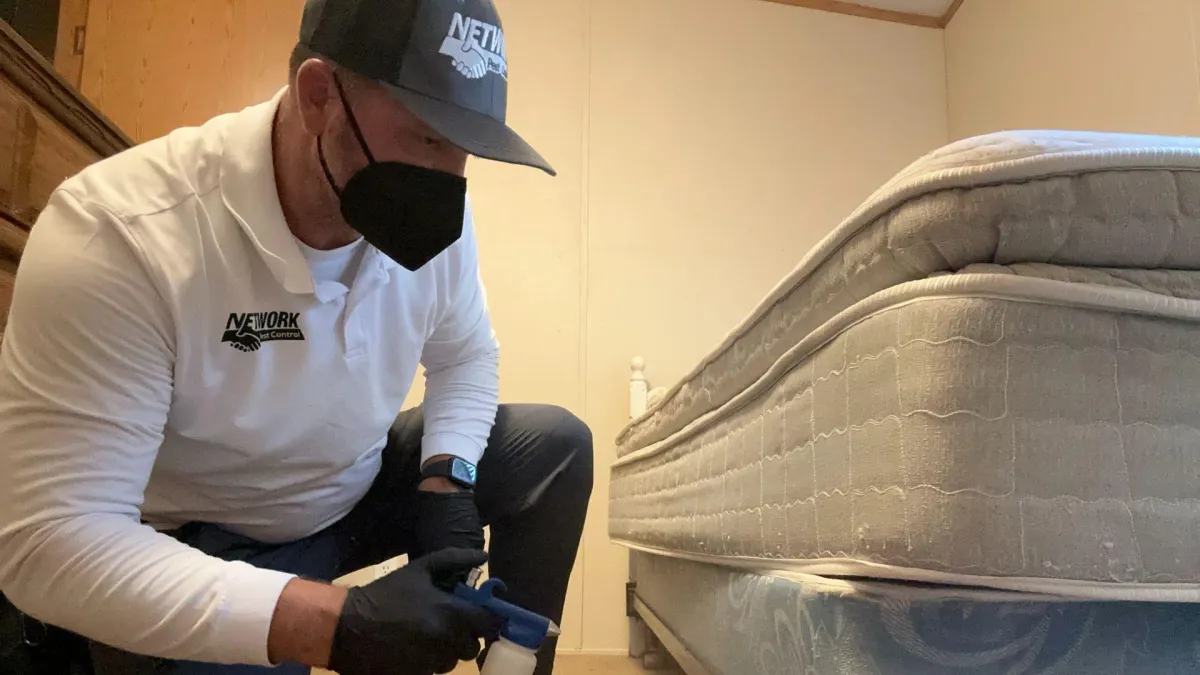Blog
Explore insightful and informative pest control blogs

Bed Bugs How Do They Spread? Easy Tips to Keep Them Away
Bed bugs spread by hitchhiking on luggage, clothing, and furniture, commonly found in hotels, public spaces, and second-hand items.
They can travel between units in shared housing through wall voids, electrical outlets, and ventilation systems.
Prevention includes inspecting belongings, sealing entry points, and using high-heat treatments to eliminate infestations before they spread.
Bed Bugs How Do They Spread? Easy Tips to Keep Them Away
Factors That Influence Bed Bug Spread
Bed bugs are resilient insects known for their ability to spread quickly and discreetly. These pests latch onto belongings such as clothing, luggage, and furniture, allowing them to infest new locations with ease.
Unlike other common household pests, bed bugs do not transmit diseases, but their bites can cause itching, allergic reactions, and significant stress. Whether in homes, hotels, or public spaces, understanding their methods of travel is key to stopping their spread and preventing infestations.
Understanding how bed bugs spread is essential for prevention and control, helping to reduce the risk of infestation in your home or workplace.
How Do Bed Bugs Spread?
Bed bugs are expert hitchhikers, moving from place to place by clinging to personal belongings, furniture, and even people. They do not jump or fly, but they crawl and latch onto items that allow them to travel long distances. Understanding how bed bugs spread is crucial to preventing an infestation.
Travel and Luggage
One of the most common ways bed bugs spread is through travel. Hotels, hostels, and vacation rentals can be hotspots for these pests. Bed bugs hide in mattress seams, bed frames, and furniture, waiting for an opportunity to latch onto luggage, clothing, or personal items. When travelers pack up and move to a new location, they unknowingly bring bed bugs with them.
How to prevent bed bugs from spreading through travel:
Inspect hotel rooms before unpacking, checking mattresses, headboards, and furniture.
Keep luggage elevated and away from walls or upholstered surfaces.
Wash clothes in hot water and dry them on high heat after returning home.
Public and Shared Spaces
Bed bugs can also spread through shared spaces where large numbers of people gather. Public transportation, schools, offices, and libraries can be breeding grounds for these pests. They can hide in seat cushions, carpets, and crevices, waiting for a new host to transport them.
Common public places where bed bugs may spread:
Buses, trains, and airplanes
Movie theaters and waiting rooms
Retail stores and dressing rooms
Used Furniture and Clothing
Buying second-hand furniture or clothing comes with the risk of bringing bed bugs into your home. These pests can hide in seams, cracks, and fabric folds of sofas, mattresses, and wooden furniture. If infested items are brought inside without proper inspection, bed bugs can quickly spread to other areas of the home.
Tips for avoiding bed bugs in second-hand items:
Inspect furniture carefully, checking seams, joints, and cushions for any signs of bed bugs.
Wash second-hand clothing in hot water before wearing it.
Avoid picking up discarded furniture from the street, as it may be infested.
Neighboring Infestations
In apartment buildings, hotels, and dormitories, bed bugs can easily move from one unit to another. They crawl through wall voids, electrical outlets, and ventilation systems, spreading an infestation beyond its initial source.
How to prevent bed bugs from spreading between units:
Seal cracks and crevices around walls, baseboards, and electrical outlets.
Use door sweeps and caulking to close gaps in shared spaces.
Regularly inspect furniture and bedding for early signs of infestation.
Factors That Influence Bed Bug Spread

Several factors affect how quickly and widely bed bugs can spread. Their survival abilities, reproduction rate, and environmental conditions all play a role in the severity of an infestation.
Temperature and Environment
Bed bugs thrive in moderate temperatures between 70-90°F (21-32°C). While they can survive in colder conditions, their reproduction slows significantly in extreme heat or cold. This adaptability allows them to infest homes in various climates.
Feeding and Reproduction
Bed bugs rely on human blood to survive and reproduce. A single female bed bug can lay hundreds of eggs in her lifetime, allowing infestations to grow rapidly. Their ability to remain hidden for long periods makes detection difficult, further increasing the chances of spreading.
How to Prevent the Spread of Bed Bugs
Since bed bugs spread through various means, proactive measures are necessary to prevent their transmission.
Precautions While Traveling
When staying in hotels or traveling, it is important to be cautious to avoid bringing bed bugs home.
Travel prevention tips:
Inspect bedding and furniture for small brown spots or live bugs.
Keep luggage in the bathroom or on hard surfaces rather than carpeted areas.
Store clothes in sealed plastic bags during travel.
Home Prevention Measures
Keeping a clean and clutter-free home can help reduce the risk of a bed bug infestation.
Preventive measures at home:
Vacuum regularly, especially around beds and furniture.
Use mattress encasements to protect against infestations.
Reduce clutter to minimize hiding spots for bed bugs.
Responding to an Infestation
If bed bugs are discovered, swift action is necessary to prevent them from spreading further.
Steps to take if you have bed bugs:
Wash all bedding, clothing, and linens in hot water.
Use high-heat treatments (like steamers) to kill bed bugs in furniture and carpets.
Consult a professional exterminator for severe infestations.
Avoid moving infested furniture to other rooms to prevent spreading.
Conclusion

Bed bugs spread primarily through human activity, hitchhiking on luggage, furniture, and clothing. They can be found in hotels, public spaces, and shared living environments, making prevention key to avoiding an infestation. Understanding their movement patterns and taking proactive steps—such as inspecting second-hand furniture, sealing home entry points, and using preventive measures while traveling—can help keep bed bugs at bay. If an infestation occurs, immediate action is crucial to stop their spread and eliminate the problem effectively.
Frequently Asked Questions About Bed Bugs How Do They Spread
How easily are bed bugs spread?
Bed bugs are easily spread through human movement and infested items. They travel by hitchhiking on luggage, furniture, clothing, and other belongings, making their way into homes, hotels, and public spaces.
Can you get bed bugs by being around someone who has them?
Bed bugs do not transfer directly from person to person like lice, but they can hitch a ride on belongings. If you are in close contact with an infested environment, bed bugs may crawl onto your clothes or bag and be transported to a new location.
What is the main cause of bed bugs?
The main cause of bed bugs is human travel and the movement of infested items. They are not attracted to dirt or poor hygiene but rather to places where they can find food (human blood) and safe hiding spots.
Can you carry bed bugs with you on your clothes?
Yes, bed bugs can cling to clothing, but they are more likely to hide in luggage, bags, and furniture. While they may hitch a ride on fabric, they do not live on humans like lice and will usually settle in crevices and folds where they can hide until their next meal.
Craving a Superior Pest Control Solution?
COMPANY STORY
& EXPERIENCE
Craig Broadhead started his pest business in 2004 in California, called Pacific Pest Control. In 2021, he sold his business and moved his family to Arkansas to start fresh with a new vision of Network Pest Control. His goal it to make sure each customer has the best experience possible.


Network Pest Control
11205 Meadow Lark Rd. Rogers AR 72756
479.888.4249
